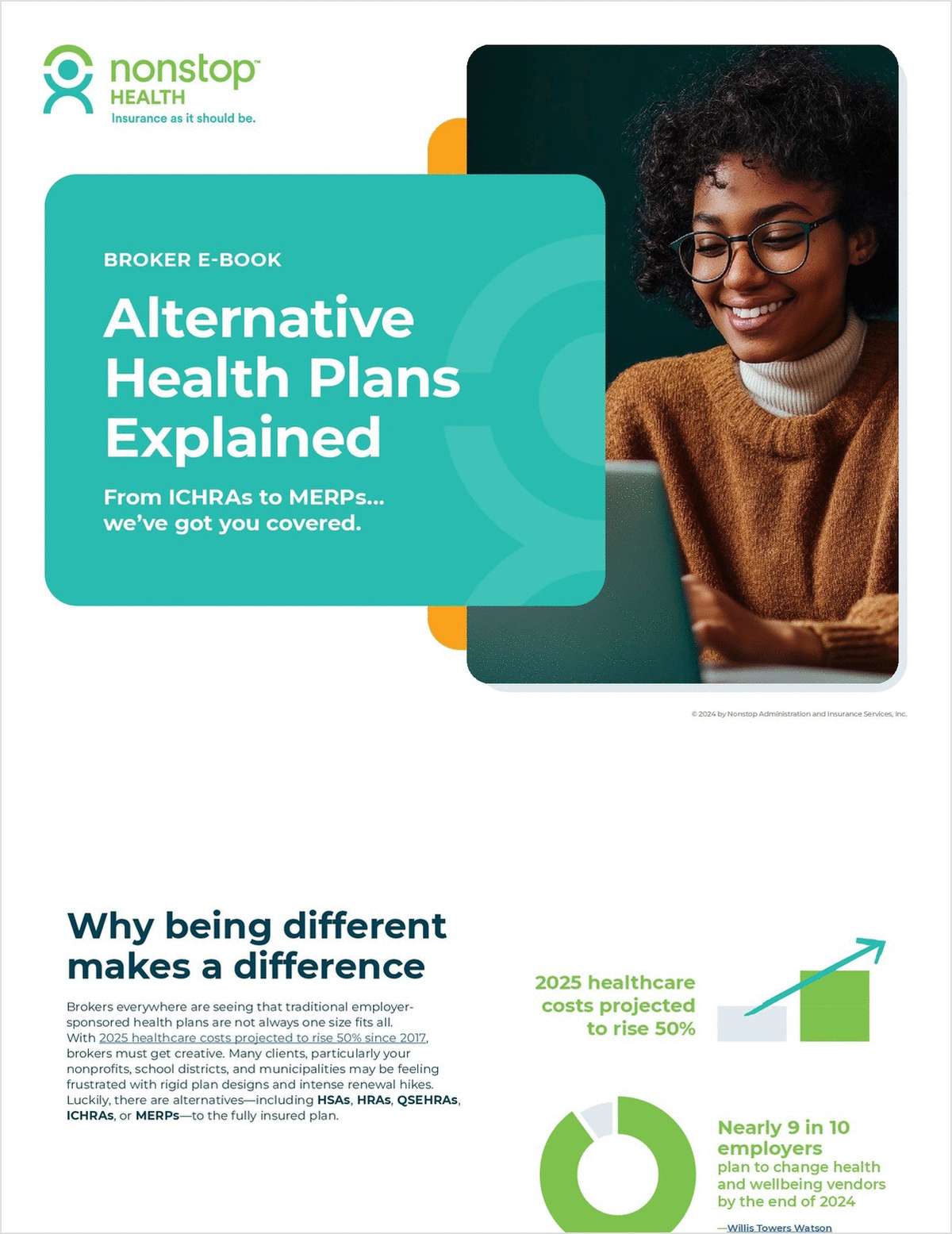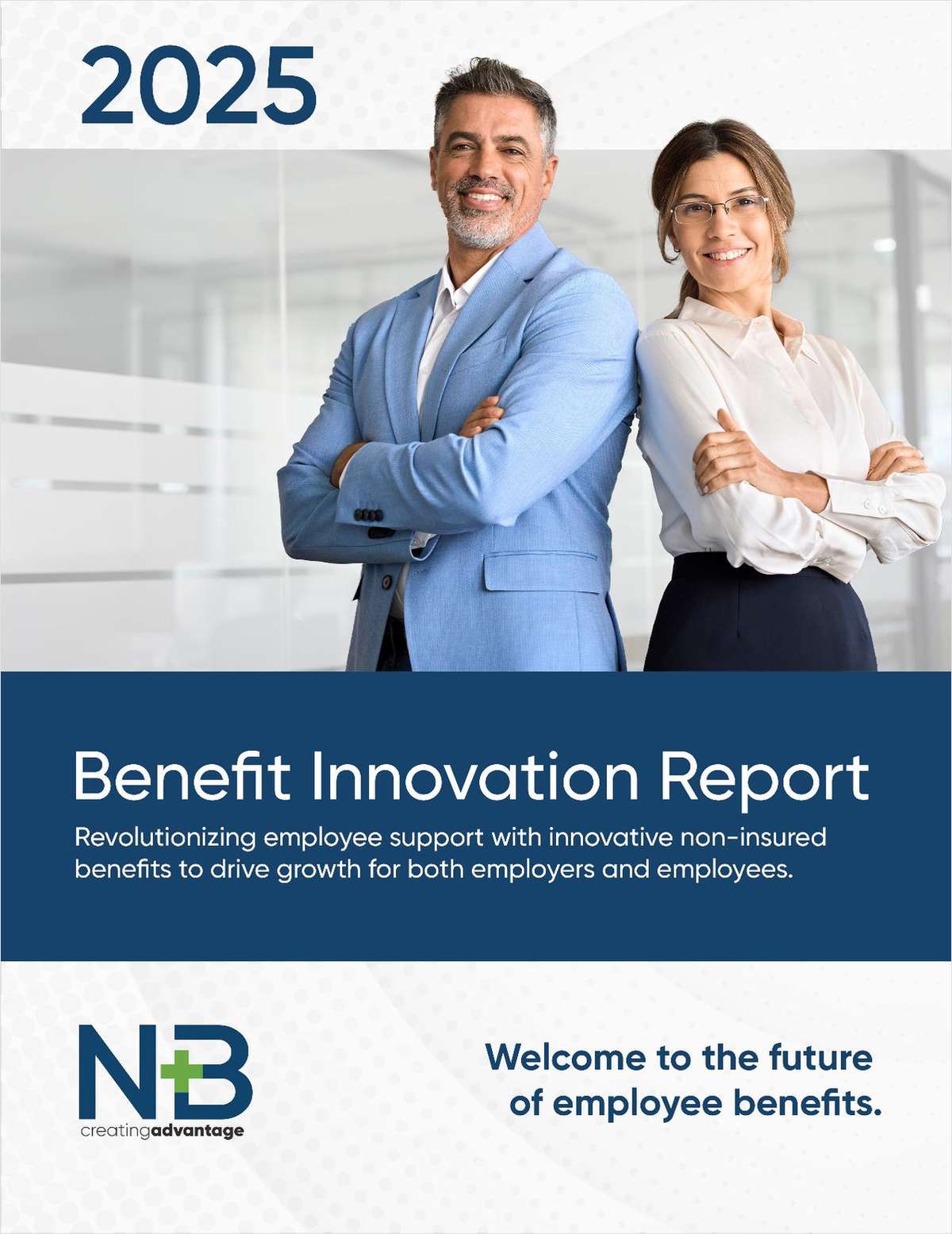 This article is the third in a five-part series that will take you step-by-step through the process of becoming a next-generation advisor. It examines the challenges so you will be ready to tackle them head on. You can find the first two articles here:
This article is the third in a five-part series that will take you step-by-step through the process of becoming a next-generation advisor. It examines the challenges so you will be ready to tackle them head on. You can find the first two articles here:
A little less conversation, a little more action
|Suspicious minds: Prepping your team for high-performing health plans
Faster than most expected, non-traditional competitors like Amazon, Walmart, Apple and Google are starting to move into the health care arena, which means brokers are in a vulnerable spot.
Most in our industry are aware of the Amazon, Berkshire Hathaway and JPMorgan Chase joint venture, Haven, a Boston-based independent, nonprofit health care company aimed at increasing patient satisfaction and reducing health care costs. But many are not aware of other ventures that are cropping up. For example, Google's parent company recently invested $375 million in Oscar Health, a new insurer focused on technology and lowering costs for patients. Meanwhile, Walmart will begin piloting its own branded center of excellence providers beginning in 2020.
Amazon, Google, Apple, Walmart and other giants are experts in building for scale by conducting smaller pilots that allow them to establish their operations and KPIs. Once the concept has proven valid, they pour fuel on the fire. In September, Amazon rolled out a trial virtual clinic for their Seattle employees; once they define their model, it will be easily duplicated in other geographic areas.
So why does this matter to you? Think about it: Your firm may have 100 clients, but if you are only paid by three insurance carriers, how many clients do you really have? After all, a client is whoever pays you. Most brokerages have a concentration of revenue from three or four sources (insurance carriers). In reality, most firms and producers today don't have the freedom they need if they remain beholden to a few major carriers and reliant on receiving commissions from them.
Don't make the mistake of thinking that the industry only gets disrupted if one of these new ventures becomes successful enough to take out a major insurance carrier. What if instead, they could simply prove that a broker distribution channel was unnecessary or brokers are overcompensated in highly regulated and commoditized markets? How long will a major carrier continue to pay these higher distribution costs if their competitors'costs are far less? And what if that reduction of distribution costs from the carriers also happens to represent 50 or 60 percent of your annual revenue today?
If your business is going to survive this forthcoming onslaught from non-traditional competitors, you will have to adopt a fee-for-service model, just as you will need to add more value for your employer clients.
Among other things, the fee-for-service model gives you true freedom from insurers threatening to pull your appointment, brings diversification to your revenue streams, and allows you to tie your compensation to results or value. Most importantly, it allows you to do what's best for your clients.
Key steps
Here are some of the steps you will need to take to safeguard your business, so you can continue to serve the best interests of your employer clients:
- Get a clear, precise picture of your revenue streams. Find out exactly how much annual revenue you would stand to lose if you lost a particular carrier. A lot of firms don't have an easy way to quantify their top revenue streams, and they don't do a great job of tracking their commissions. One of the biggest complaints from brokers is how hard it is to track commissions. This becomes much easier when you switch from commissions to fee-for-service.
- Decide how fast you want to convert your business to fee-for-service. Ideally, you should aim to convert your entire business within three to five years. Develop a plan at the start and pay attention to the changes in the marketplace that may tell you to move faster or slower. Adjust your marketing messages based on how fast you want to convert your business. Think in gradual terms, such as "what would it take for my firm to go from 90 percent commissions today to 60 percent commissions a year from now?"
- Start with your biggest clients first and keep working your way down. Your largest clients are used to this model already from working with other advisors and consultants.
- When adding new clients, only take them on a fee-for-service basis.
With most clients, the switch to fee-for-service will be well-received. The conversations don't have to be hard. There's no reason to expect a lot of pushback and confusion from clients. Clients and prospects are more inclined to work with brokers who are transparent and have more skin in the game.
You can charge a per-employee amount, a project fee, a monthly retainer, or an hourly fee. One word of caution: With regulated market business, it can be difficult to switch to the fee-for-service model. The laws vary by state regarding what you can and cannot do with your fees. The licensing varies, too. In some states, you may need an advisor license. Check your state's licensing requirements to understand what you are allowed to do with your regulated market business.
Make sure your clients are not double paying the premium and your fee. Broker fees must be fully disclosed to the buyer, and they must be reasonable. Some states treat broker fees as surplus lines premium and subject those fees to a separate tax.
Do you have the staff and technology to implement the transition internally? If not, you will need to outsource it. It doesn't need to be complicated. You can easily get accounting software that will probably be more accurate than the system you're using now to track commissions.
Regardless of how you structure the fees, becoming an advisor of tomorrow will make you better prepared for the disruptions that the big non-traditional competitors will bring to the health insurance marketplace.
The next three articles in this series will take you step-by-step through the process and examine the challenges involved, so you will be ready to tackle them head-on. The articles will focus on:
- Now that you are ready: Transitioning your clients
- Now that you and your clients are ready: Managing your carrier relationships
- Conclusions and looking ahead
Complete your profile to continue reading and get FREE access to BenefitsPRO, part of your ALM digital membership.
Your access to unlimited BenefitsPRO content isn’t changing.
Once you are an ALM digital member, you’ll receive:
- Breaking benefits news and analysis, on-site and via our newsletters and custom alerts
- Educational webcasts, white papers, and ebooks from industry thought leaders
- Critical converage of the property casualty insurance and financial advisory markets on our other ALM sites, PropertyCasualty360 and ThinkAdvisor
Already have an account? Sign In Now
© 2024 ALM Global, LLC, All Rights Reserved. Request academic re-use from www.copyright.com. All other uses, submit a request to [email protected]. For more information visit Asset & Logo Licensing.








